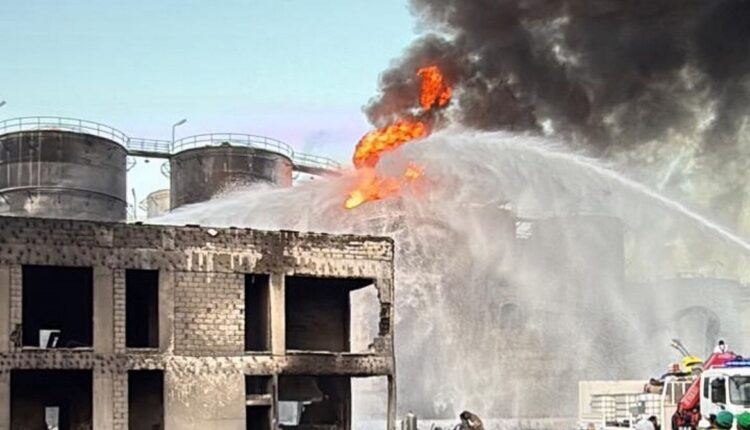Sea News – International Service-* On June 31, 2025 (10 Khordad 1404 in the Iranian calendar), a large-scale fire broke out in a petrochemical warehouse at Hamriyah Port in Sharjah, UAE, marking one of the most serious industrial incidents in recent years in the country. This event not only caused significant damage to the port’s infrastructure but also drew attention to ongoing challenges in industrial safety and hazardous materials management in the region. This analysis examines the likely causes of the incident, its consequences, and recommended measures to prevent similar future occurrences.
According to preliminary reports, the fire was triggered by the ignition of highly flammable petrochemical materials stored in one of the port’s warehouses. However, contributing factors such as improper chemical storage, absence or malfunction of advanced early warning systems, and insufficient employee training likely played a key role in the outbreak and escalation of the fire. Technical and judicial investigations are still underway to identify the root causes, with results expected to shed more light on the incident.
The rapid and coordinated response of Sharjah Civil Defense forces, police, and the National Guard, utilizing advanced firefighting equipment, prevented the fire from spreading to adjacent facilities. This reaction demonstrated a certain level of crisis management preparedness, yet the fire’s persistence for over 24 hours raised questions about the adequacy of firefighting resources and the effectiveness of emergency protocols.
Hamriyah Port, as a pivotal hub for the export and import of petrochemical products in the Persian Gulf, plays a vital role in regional and global supply chains. The fire could have significant economic repercussions, including temporary suspension of port operations, damage to infrastructure, and increased logistical costs. Moreover, the release of dense smoke and chemical pollutants into the air and surrounding waters has sparked concerns about environmental contamination and its impact on marine ecosystems and public health. Accurate environmental impact assessments and immediate remediation efforts are imperative to mitigate these damages.
Despite substantial investments in strategic ports across the UAE, incidents such as this underscore structural and managerial weaknesses in industrial safety. Key reasons include incomplete adherence to safety standards and lapses in enforcing protective protocols, often due to insufficient rigorous inspections and continuous monitoring. In addition, poor hazardous material handling, inadequate firefighting equipment, and lack of specialized training and preparedness among personnel escalate the risk of such incidents. Commercial pressures to enhance operational speed and productivity can also contribute to safety compromises. Ultimately, cultural challenges and managerial shortcomings in crisis management further exacerbate the consequences of these accidents. Therefore, financial investment alone, without simultaneous strengthening of safety infrastructure, workforce training, and oversight systems, cannot guarantee prevention of major industrial disasters.

